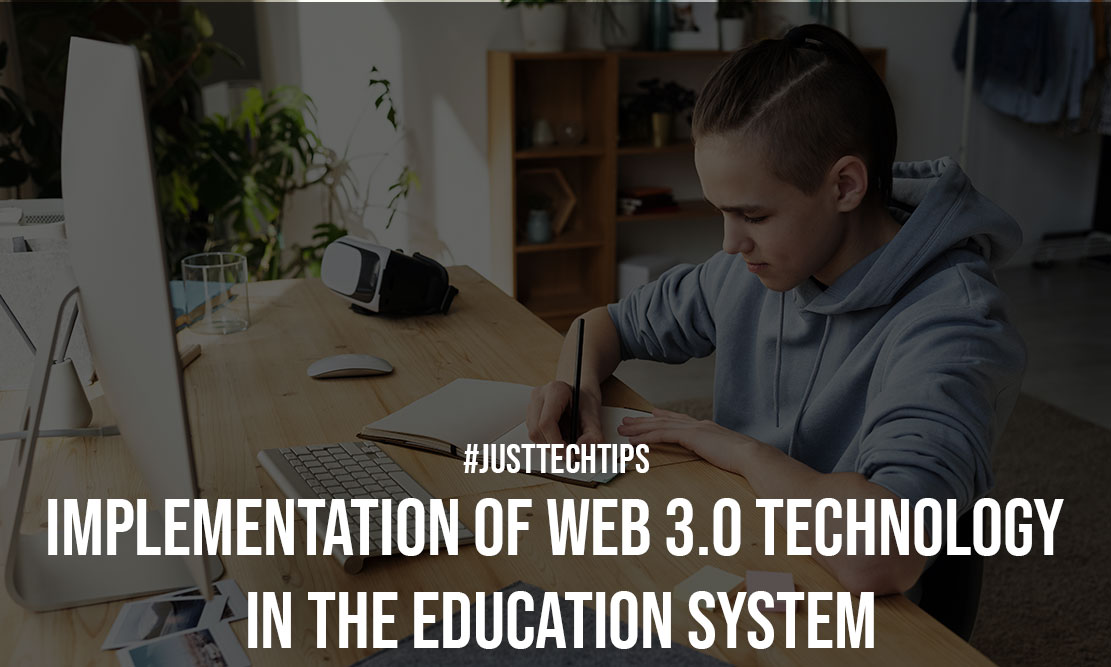The most recent web technology is Web 3.0, also known as the Semantic Web. With this new technology, users can interact more, and machines can process more, read and understand more.
The education system is a great beneficiary of Web 3.0 because the technology can now be integrated into the education system.

With this technology, students can receive more information in the course of learning and communicate with people who are experts in specific subjects or topics.
What Web 3.0 promises to the education system
Tech in education is not a new thing and e-learning has depended on technology since its inception. The good news is that Web 3.0 promises a new revolution in education and e-learning experience.
With this technology, there will be personalized teaching, better management of knowledge, use of intelligent data, and content that a computer can understand, process, analyze and make reports.
To help maximize these expectations, stakeholders in the education field must put in place the right measures that will help tap the benefits to the maximum.
On the other hand, students must be prepared to use the resources to their best and take their learning experience to a whole new level. Students and educators will be able to use online information and filter it into clusters that can be used to impact knowledge.
Another unique promise by Web 3.0 is an enhanced chance to use integration and collaboration tools to improve student-student and student-teacher relations.
Also Read: Things To Consider When Choosing A Web Development Company For Your ECommerce
Challenges likely to be experienced at the initial phase
Like with any system or technology, results are not automatically obtainable. The user must apply the right tools to command the system to generate results. Although the system promises unprecedented results, its sophistication is higher compared to Web 2.0 and Web 1.0.
Successful learning will demand a multidisciplinary approach and this new technology requires students to learn its application, pros, and cons when used as a learning tool. If there will be any relevant result and significant change, students and teachers must know the right tools to use.
The introduction of modern Web 3.0 technologies will help the student write college papers faster, receive more information in the course of informal learning and get professional help from people who are experts in a particular topic.
The fact is that with the advent of quarantine, the field of online learning began to develop at an accelerated pace. It should be noted that with Studyclerk, a student can find many professionals who can solve any college paper.
You can browse Studyclerk and you can pay for college papers without a worry. With their writing experts, your college paper or essay will be written professionally within no time.
Benefits of using Web 3.0
The new technology will interact with students and teachers better compared to the earlier versions. Users will only key in keywords and the system will do the rest. A student may type keywords such as – “I want an online essay writer to write my argumentative essay. I only have a budget of $30.”
Under this keyword, (note the keyword is an entire sentence), the system will query the web suing the student interest, activity, and budget and come up with a customized package for the student as if it had been prepared just for them.
In other words, instead of the user browsing through hundreds of websites looking for a writer who can fit within their budget, the system eliminates all that process and finds the exact thing the student is looking for. The same case will apply to research, e-learning, academic writing, and teaching.
How will everything eventually play out in the education sector?
For many years, the education sector has had huge budgets for buying software, hardware but the outcomes have remained the same. With Web 3.0, tens of millions of gadgets will be interconnected through the network such that educators and students no longer need to buy a gadget for each unique education need.
Everything will be interconnected and the responsibility of the teacher will be to use digital technology to enhance learning.
Also Read: How To Make Money With Just One Web Page?
Conclusion
Web 3.0 will revolutionize learning and the entire education system. Using AI, educators will track student performance and use personalized teaching to help the student better. IoT will interconnect all devices and it will be like the entire world is connected to one big device.
All that educators and their students will require to do are tap into the big device and customize their results. Technologies like 3D images augmented reality and virtual learning will enhance interaction and make learning easier and better.
Author’s Bio:
Helen Birk is a leading fiction writer working with an online publishing firm for many years. She is a champ in what she does and has an equal level of interest in academic writing, which she does on a part-time basis.
In her free time, she takes care of her cats, goes out biking and fishing, and reads business books.